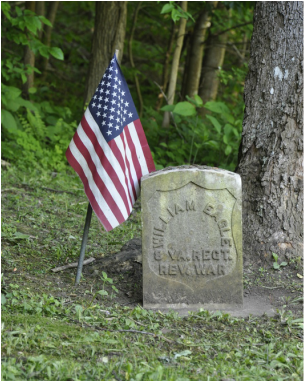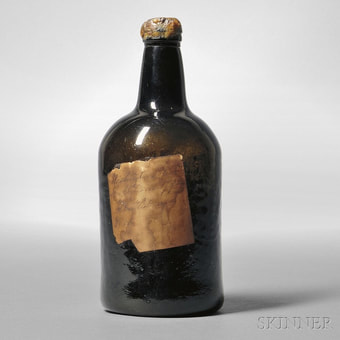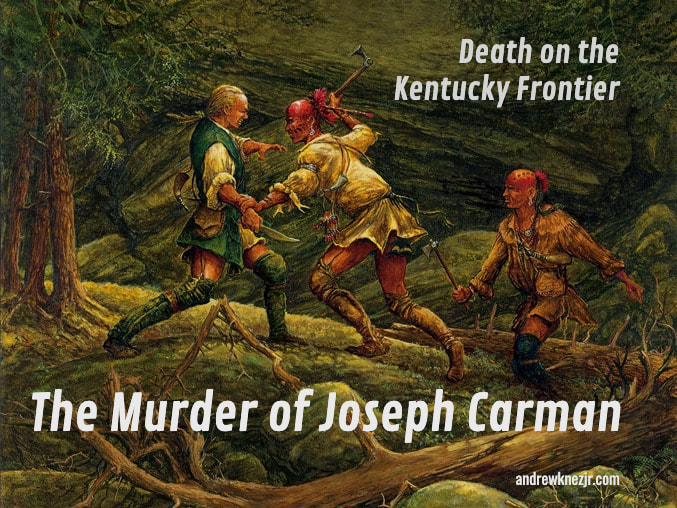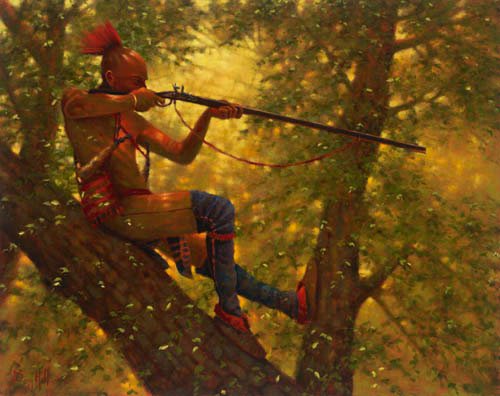Despite his evidently very rough edges, Kirkpatrick became part of the post-war Pittsburgh elite. He co-founded the Bank of Pittsburgh and ran an early steel mill. His grandson Abraham Kirkpatrick Lewis was a pioneer in the Pittsburgh coal business, shipping coal on flat boats all the way to new Orleans. In 1794, President George Washington sent Abraham Kirkpatrick several bottles of imported wine to thank him for helping put down the Whiskey Rebellion. One bottle survives, having been kept by the family for over two centuries. Its contents are now evaporated into a dry sediment. It was put up for auction a few years ago but didn’t sell. Details about the object, including a high-definition image, can be seen at the Skinner auction house website. More from The 8th Virginia Regiment
2 Comments
 A historic marker in Pendleton County, West Virginia tells the story of fifteen year-old William Eagle, who enlisted in the 8th Virginia on Christmas Eve, 1776. This was the Revolution's darkest hour. Washington's dwindling army had fled from the British across New Jersey and was now huddling, frozen by fear and cold on the West Bank of the Delaware. At a moment when few were willing to enlist, this teenage patriot stepped forward. Except it isn't true. Eagle's pension gives the same date that appears on the sign, but they are both wrong. The sign probably takes its date from the pension. As far as we know, Eagle served honorably and well. But he didn't enlist until December of 1777 when he was sixteen years old. The evidence is clear. First, His name appears nowhere in the muster or pay rolls for 1777, and the "commencement of pay" date on his first pay roll entry is February 1, 1778. Second, His pension affidavit claims that he "enlisted for the term of three years, on or about the 24th day of December in the year 1776, in the state of Virginia in the Company commanded by Captain Stead or Sted or Steed, in the Regiment commanded by Colonel Nevil or Neville." Colonel John Neville (no known relation to me) commanded the regiment after it was folded into the 4th Virginia in the fall of 1778. Had Eagle enlisted in the regiment in December of 1776 and joined it in January of 1777 he would certainly have mentioned Colonel Abraham Bowman, who became a "supernumerary" officer and was released from service when the regiments merged. Eagle served under Bowman only for a short while and, consequently, did not mention him. Eagle got the names right (Neville and Steed), but the year wrong. Third, the term of his enlistment is consistently recorded as for 3 years or the length of the war (which ever was shorter). Soldiers who enlisted in 1777 or later enlisted under these terms. Virginia soldiers who enlisted in 1776 signed up for two years. (Someone might argue that a date so late in the year might have been treated differently, but I'm not aware of any examples of this.) The date of his enlistment is not recorded anywhere in the surviving official records. From the evidence, however, it seems certain that he in fact enlisted "on or about the 24th day of December" in the year of 1777--not 1776--and joined the regiment at Valley Forge about a month later. Eagle is not the only veteran who got the dates of his service wrong when applying for a pension decades later. It is an understandable error for an old man to make. The State of West Virginia might, however, want to invest in an updated marker. So what happened to William Eagle? After nearly two years of service he was “discharged for inability” on September 1, 1779. Tradition has it that he had a broken arm. Whatever his injury was, it saved him capture following the surrender of the Virginia Line after the Siege of Charleston in May of 1780. William Eagle’s grave is by Eagle Rocks, a steep peak near the headwaters of the Potomac in West Virginia’s remote Smoke Hole Canyon. Ross B. Johnston wrote in his book West Virginians in the Revolution that the veteran named his son George Washington Eagle, and he nearly lost his life one day climbing his namesake peak in an attempt to capture some baby eagles. (Revised December 21, 2019)
According the the affidavit, “He never was regularly mustered into or out of service," he said. "He never was discharged regularly. He received some little pay, but does not now recollect how much. He is unacquainted with the names of any Regular or Continental officers or companies, nor ever served with any.... He never was regularly enrolled in any company or corps, unless it might be Genl Clark’s or Col Hays’s. He belonged to none at home. He has no documentary evidence of his service; he knows of no living witness who can testify personally as to his service....” The death of Duncan's father was noted at the time by Daniel Boone, who collected the ball-head war club that had been used to kill him. War clubs were left by Indians as macabre calling cards beside their victims. Boone gave the club to Maj. Arthur Campbell who wrote to William Preston on October 1, 1774, "Mr. Boone preparing to go in search of the enemy...thinks it is the Cherokees that is now annoying us." This was at the height of Lord Dunmore's War, a conflict fought by Virginia primarily against the Ohio-based Shawnee over control of Kentucky. In 1905, David E. Johnston, a descendent of 1778 New River settlers, wrote, "The life of these people was a long and dangerous struggle.... A race of men unused to war and ever present dangers, would have been helpless before such foes as these wild beasts and the Indians. People coming from the old world, no matter how thrifty and adventurous, could not hold their own on the frontier.... Every man from childhood was accustomed to the use of the rifle, and even a boy at twelve years was regarded old enough to have a gun, and was soon taught how to use it. He at least could make a good fort soldier. The war was never ending, for even the times of so-called peace were broken by forays and murders. A man might grow from boyhood to middle age on the border, and yet never recall a single year in which some of his neighbors were not killed by the Indians." The pension affidavit, however, is great reading for anyone interested in early frontier history. It was transcribed by C. Leon Harris and is one of thousands Harris and his partners at RevWarApps.com have transcribed and put online. These affidavits have long been largely ignored by historians, who have been suspicious of them as the late memories of old men eager for money. Used carefully, however, they are a great resource to my research—especially when they corroborate each other or fill in blanks in the record. Duncan’s affidavit can be read here. Though he lived for a time in an area that recruited men for the 8th Virginia, Duncan was never connected with the regiment. (Updated May 31, 2021 and August 28, 2021.) More from The 8th Virginia Regiment |
Gabriel Nevilleis researching the history of the Revolutionary War's 8th Virginia Regiment. Its ten companies formed near the frontier, from the Cumberland Gap to Pittsburgh. Categories
All
Archives
June 2024
© 2015-2022 Gabriel Neville
|









 RSS Feed
RSS Feed